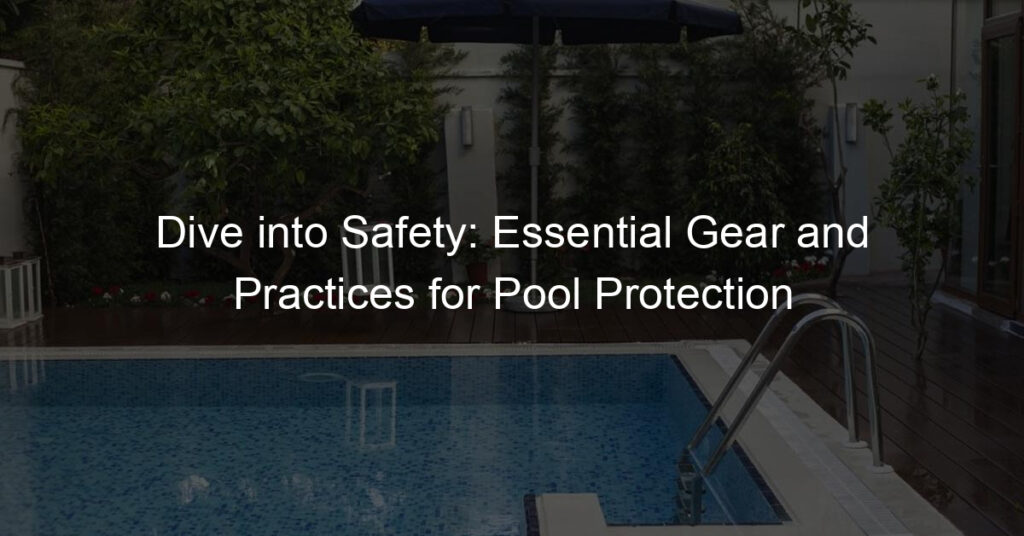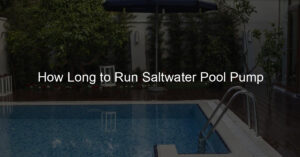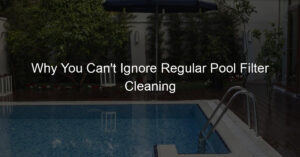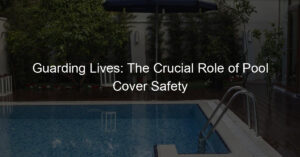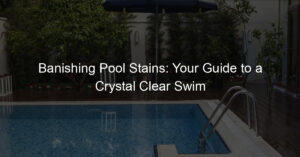Introduction to Pool Safety
Swimming pools are a great source of fun and relaxation, especially during the hot summer months. However, they can also pose significant risks if not used safely. This is why understanding pool safety is essential. In this section, we will discuss the importance of pool safety and provide an overview of some key safety measures.
- Understanding the Importance of Pool Safety
- Overview of Pool Safety Measures
Pool safety is not just about rules and regulations; it’s about ensuring the well-being and safety of everyone who uses the pool. According to the Centers for Disease Control and Prevention (CDC), about ten people die from unintentional drowning every day. Of these, two are children aged 14 or younger. Drowning ranks fifth among the leading causes of unintentional injury death in the United States. These statistics highlight the critical need for effective pool safety measures.
There are several measures you can take to ensure pool safety. These include supervising children when they are in or around the pool, learning CPR, installing fences around the pool, and using pool covers when the pool is not in use. Additionally, it is important to maintain the pool’s cleanliness and chemical balance to prevent health issues. We will delve deeper into these measures in the subsequent sections of this blog post.
In the following sections, we will explore essential pool safety practices, how to maximize pool safety, the equipment needed for pool safety, and best practices for pool safety. By the end of this post, you will have a comprehensive understanding of how to ensure a safe and enjoyable pool experience.
Essential Pool Safety Practices
When it comes to ensuring a safe and enjoyable pool experience, there are a few essential practices that can make a big difference. In this section, we will focus on the importance of supervision and training in maintaining pool safety.
Supervision and Training
Proper supervision and training are key components of pool safety. They not only prevent accidents but also equip individuals with the necessary skills to respond effectively in case of emergencies.
- Importance of Adult Supervision
- Swimming Lessons and Safety Training
Adult supervision is a critical aspect of pool safety. According to the Centers for Disease Control and Prevention, children aged 1-4 have the highest drowning rates, and most incidents occur in home swimming pools. Therefore, it’s crucial to ensure that an adult is always present and actively watching when children are in or around the pool. Remember, supervision should be constant and distraction-free.
Swimming lessons and safety training are equally important. They provide individuals, especially children, with the necessary skills to stay safe in the water. The American Academy of Pediatrics recommends swimming lessons as a layer of protection against drowning for children aged 4 and older. Safety training, on the other hand, equips individuals with knowledge on how to respond to pool emergencies. This includes learning how to perform CPR, understanding the signs of drowning, and knowing how to use pool safety equipment.
In conclusion, supervision and training are not just optional extras when it comes to pool safety. They are essential practices that can save lives. So, make sure to always supervise children in the pool and consider enrolling them, and yourself, in swimming and safety training courses.
Pool Safety Guidelines
When it comes to pool safety, there are two main areas that we need to focus on. These are establishing pool rules and enforcing safety guidelines. Let’s dive into these two crucial aspects.
- Establishing Pool Rules
Setting up pool rules is the first step towards ensuring a safe swimming environment. These rules act as a guide for everyone using the pool, helping to prevent accidents and injuries. Here are a few basic rules that every pool should have:
| Rule | Description |
|---|---|
| No Running | Running around the pool can lead to slips and falls. It’s best to walk to avoid any accidents. |
| Swim with a Buddy | Never swim alone. Always have someone with you in case of emergencies. |
| No Diving in Shallow Water | Diving in shallow water can lead to serious head and neck injuries. Always check the depth before diving. |
- Enforcing Safety Guidelines
Establishing rules is just the first step. The next crucial step is enforcing these safety guidelines. Here are a few ways to ensure everyone follows the rules:
- Regular Reminders: Regularly remind everyone about the pool rules. This can be done through signs around the pool or announcements.
- Supervision: Always have a responsible adult supervising the pool area. They can ensure that everyone is following the rules and intervene if necessary.
- Penalties: If someone repeatedly breaks the rules, consider implementing penalties. This could be a temporary ban from the pool or a fine.
By establishing clear pool rules and enforcing safety guidelines, we can ensure a safe and enjoyable swimming experience for everyone.
Maximizing Pool Safety
Ensuring safety around the swimming pool is a top priority. It’s not just about having fun, but also about keeping everyone safe. Here are some tips to maximize pool safety.
Swimming Pool Safety Tips
There are several ways to ensure safety when using a swimming pool. Let’s look at two key areas: preventing unsupervised access and practicing safe diving.
- Preventing Unsupervised Access
- Safe Diving Practices
One of the most effective ways to maximize pool safety is to prevent unsupervised access. This means making sure that the pool area is secure when not in use. A fence or a pool cover can be used to restrict access. It’s also important to keep the pool area clean and free of toys or other items that might attract children.
Another important aspect of pool safety is safe diving. Diving should only be allowed in designated areas where the water is deep enough. It’s also crucial to ensure that the person diving knows how to swim and is aware of the depth of the pool. Always remember, head-first dives should be avoided in shallow water to prevent head and neck injuries.
By following these tips, you can ensure a safe and enjoyable swimming experience for everyone. Remember, pool safety is everyone’s responsibility.
Emergency Preparedness
When it comes to maximizing pool safety, being prepared for emergencies is crucial. This involves two key areas: First Aid and CPR training, and having emergency contact information readily available.
- First Aid and CPR Training
First Aid and CPR (Cardiopulmonary Resuscitation) training are essential skills for anyone who owns or uses a swimming pool. These skills can make the difference between life and death in an emergency situation.
First Aid training equips you with the knowledge to handle minor injuries that may occur around the pool, such as cuts, bruises, or minor burns from the sun. More importantly, it prepares you to manage more serious situations like head injuries or broken bones until professional help arrives.
CPR training is equally important. If someone becomes unconscious in the water, knowing how to perform CPR can save their life. According to the American Heart Association, immediate CPR can double or even triple chances of survival after cardiac arrest.
- Emergency Contact Information
Having emergency contact information readily available is another crucial aspect of emergency preparedness. This includes the phone numbers of local emergency services, as well as the contact information of a nearby hospital.
It’s also a good idea to have the contact information of all pool users. In case of an emergency, you can quickly contact their family members or other relevant persons. This information should be kept in a visible and easily accessible place near the pool.
In conclusion, being prepared for emergencies is a vital part of pool safety. By ensuring you have the necessary First Aid and CPR training, and keeping emergency contact information at hand, you can help ensure a safe and enjoyable pool experience for everyone.
Pool Safety Equipment
Ensuring safety around the pool area is crucial. This can be achieved by using the right pool safety equipment. Let’s take a look at some essential pool safety tools that can help prevent accidents and enhance safety.
Pool Safety Tools
Here are some key tools that can significantly improve pool safety:
- Pool Fencing and Gates
- Pool Alarms
Pool fencing and gates are the first line of defense when it comes to pool safety. They act as a physical barrier, preventing children and pets from accidentally falling into the pool. The fencing should be at least 4 feet high and the gates should be self-closing and self-latching to ensure maximum safety.
Pool alarms are an excellent tool to enhance pool safety. They can be installed on the pool gate, door, or even in the pool itself. These alarms are designed to alert you when someone enters the pool area or falls into the water. For instance, a gate alarm will sound if the gate is opened, while a pool alarm will trigger if there’s a disturbance in the water. This can provide crucial seconds to prevent a potential tragedy.
Remember, while these tools can significantly enhance safety, they should be used in conjunction with proper supervision and safety practices. Pool safety is everyone’s responsibility, and these tools are just one part of a comprehensive approach to ensuring a safe and enjoyable pool experience.
Pool Safety Accessories
When it comes to pool safety, it’s essential to have the right accessories on hand. These items not only provide an extra layer of protection but can also aid in rescue situations. Let’s take a closer look at two key pool safety accessories: life jackets and flotation devices, and rescue equipment.
- Life Jackets and Floatation Devices
Life jackets and flotation devices are crucial for pool safety, especially for children and those who are not strong swimmers. These devices provide buoyancy, helping the wearer to stay afloat in the water. They come in various sizes and designs, ensuring there’s a suitable option for everyone.
According to the Centers for Disease Control and Prevention, three children die every day as a result of drowning. However, life jackets can reduce the risk of drowning by up to 88%. It’s clear that having life jackets and flotation devices available can make a significant difference in pool safety.
- Rescue Equipment
Rescue equipment is another essential pool safety accessory. This includes items like life rings, reach poles, and rescue hooks. These tools can be used to pull someone in distress out of the water, potentially saving a life.
For example, a reach pole can be extended to a person struggling in the water, allowing them to grab hold and be pulled to safety. Similarly, a life ring can be thrown to a person in the water, providing them with a flotation device to hold onto until help arrives.
Remember, having the right pool safety accessories is just one part of ensuring a safe and enjoyable pool experience. Regular maintenance, supervision, and understanding of pool safety rules are also crucial.
Best Practices for Pool Safety
Ensuring pool safety is a combination of various factors. One of the most important aspects is regular maintenance and inspection. This includes checking pool equipment and ensuring regular cleaning and water quality testing.
Regular Maintenance and Inspection
Regular maintenance and inspection are crucial to maintaining a safe and enjoyable pool environment. This involves two key steps:
- Checking Pool Equipment
- Regular Cleaning and Water Quality Testing
Checking your pool equipment regularly is essential for maintaining pool safety. This includes inspecting the pool pump, filter, heater, and other equipment for any signs of wear and tear. Damaged equipment can lead to accidents, so it’s important to replace or repair them as soon as possible.
Keeping your pool clean and testing the water quality regularly is another important aspect of pool safety. Dirty water can lead to health issues like skin irritation and eye infections. Regular cleaning and testing can help maintain the right chemical balance in the water, making it safe for everyone to enjoy.
By following these best practices for pool safety, you can ensure a safe and enjoyable swimming experience for everyone. Remember, pool safety is not a one-time task, but a continuous process that requires regular attention and care.
Education and Awareness
One of the best practices for pool safety is to promote education and awareness. This not only involves teaching children about pool safety but also staying updated on pool safety standards. Let’s dive into these two crucial aspects:
-
Teaching Children about Pool Safety
Children are naturally drawn to water and pools can be a source of great fun for them. However, they might not be aware of the potential dangers. It’s essential to teach them about pool safety from an early age. This includes rules like never swimming alone, not running around the pool, and what to do in case of emergencies.
One effective method is to use visual aids and games to make learning fun and engaging. For example, you could create a pool safety chart with colorful illustrations and simple language. You could also role-play different scenarios to help them understand what to do in various situations.
-
Staying Updated on Pool Safety Standards
Pool safety standards are regularly updated to incorporate new research findings and technological advancements. As a pool owner, it’s your responsibility to stay informed about these changes. This will help you ensure that your pool is as safe as possible.
Some of the aspects to keep an eye on include pool barrier guidelines, drain cover standards, and chemical handling procedures. You can usually find this information on the websites of relevant regulatory bodies or pool safety organizations.
Remember, education and awareness are key to preventing accidents and ensuring a safe and enjoyable pool experience for everyone. So, make sure to invest time in teaching children about pool safety and staying updated on pool safety standards.
Conclusion: Ensuring a Safe and Enjoyable Pool Experience
As we wrap up our discussion on pool safety, it’s important to remember that the goal is not just to prevent accidents, but to ensure that everyone can enjoy the pool with peace of mind. Let’s recap the essential practices we’ve discussed and emphasize the importance of continuous learning and vigilance.
- Recap of Essential Pool Safety Practices
Throughout this article, we’ve highlighted several key practices for pool safety. These include:
- Always supervising children when they’re in or near the pool
- Ensuring everyone in the household knows how to swim
- Keeping the pool area free of potential hazards
- Using safety equipment like pool fences, covers, and alarms
- Learning and practicing water safety skills
- Importance of Continuous Learning and Vigilance
Pool safety is not a one-time effort. It requires continuous learning and vigilance. Stay updated with the latest safety guidelines and equipment. Regularly check and maintain your pool and safety equipment to ensure they’re in good working condition.
Remember, the most effective way to prevent pool accidents is by staying vigilant. Always keep an eye on the pool when it’s in use, especially when children are present. It’s also a good idea to learn basic lifesaving skills, such as CPR, in case of emergencies.
In conclusion, pool safety is a responsibility that should be taken seriously. By following these essential practices and staying vigilant, we can ensure a safe and enjoyable pool experience for everyone.

